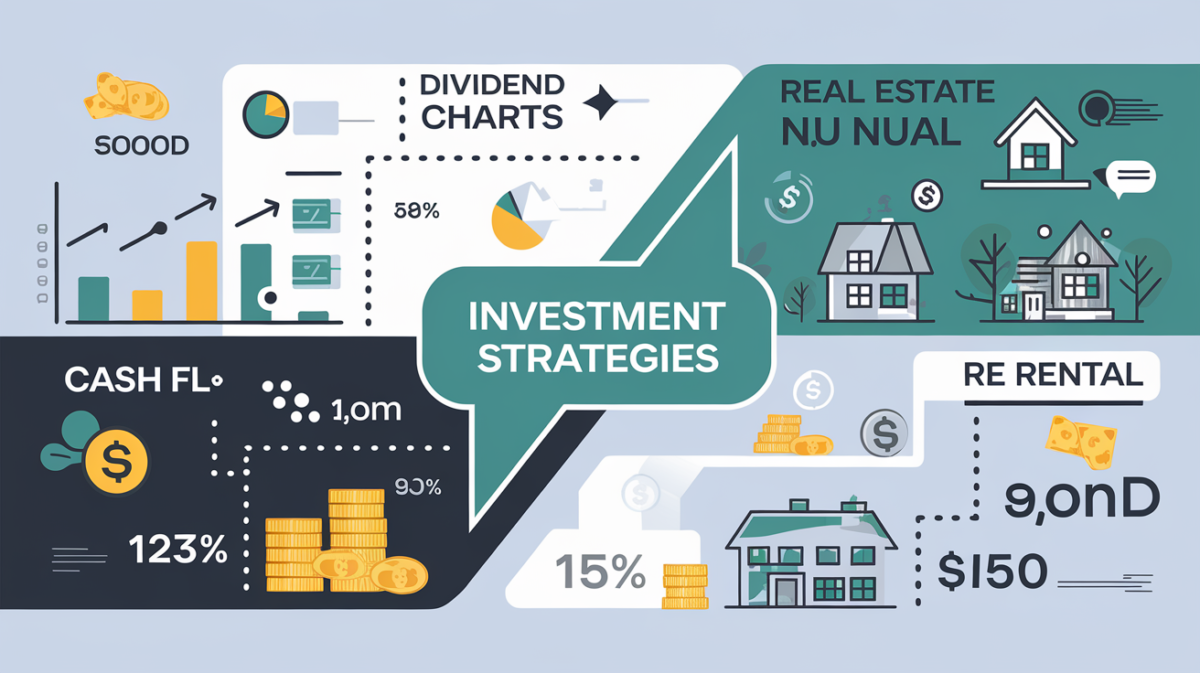In today’s fast-paced economy, generating a steady monthly income of $5,000 is a goal many aspire to achieve. Whether you’re planning for early retirement, financial independence, or simply looking to supplement your earnings, two investment strategies stand out: dividend investing and real estate. Both approaches offer unique advantages and challenges, and understanding them can help you make an informed decision.
1. Dividend Investing: Building Wealth Through Stocks
Dividend investing is a time-tested strategy where investors buy shares of companies that regularly distribute a portion of their profits to shareholders. This method can provide a reliable income stream, especially when executed with a long-term perspective.
Key Factors to Consider
- Dividend Yield: This measures the annual dividend payment relative to the stock’s price. A higher yield means more income, but it could also indicate higher risk.
- Dividend Growth: Companies that consistently increase their dividends often signal financial stability and growth potential.
- Diversification: Spreading investments across multiple sectors reduces risk and ensures stability.
Example Calculation
To earn $5,000 per month ($60,000 annually) with an average dividend yield of 4%, you would need:
Required Investment = $60,000 / 0.04 = $1,500,000
Challenges
- High Capital Requirement: A significant initial investment is often necessary.
- Market Volatility: Stock prices and dividend payouts can fluctuate.
- Tax Implications: Dividends may be taxable, depending on your location.
2. Real Estate Investment: Passive Income from Properties
Real estate is another powerful way to generate passive income. Whether through direct property ownership or Real Estate Investment Trusts (REITs), this strategy can provide consistent cash flow and potential long-term appreciation.
Key Factors to Consider
- Rental Properties: Owning and renting out properties can yield steady income, but requires management.
- REITs: These allow you to invest in real estate without owning physical properties, offering liquidity and diversification.
- Capital Appreciation: Over time, properties may increase in value, adding to your returns.
Example Calculation
To earn $5,000 per month ($60,000 annually) with an average ROI of 6%, you would need:
Required Investment = $60,000 / 0.06 = $1,000,000
Challenges
- High Initial Costs: Purchasing property requires substantial capital.
- Management Effort: Handling tenants and maintenance can be demanding.
- Market Risks: Economic downturns can affect property values and rental demand.
Dividend Investing vs. Real Estate: A Comparison
| Factor | Dividend Investing | Real Estate Investment |
|---|---|---|
| Initial Investment | High ($1.5M for 4% yield) | High ($1M for 6% ROI) |
| Income Stability | Moderate (market-dependent) | High (rental income) |
| Management Effort | Low (passive) | High (unless using REITs) |
| Liquidity | High (stocks are easily sold) | Low (properties take time to sell) |
Which Strategy Is Right for You?
Choosing between dividend investing and real estate depends on your financial goals, risk tolerance, and available resources. Here’s a quick guide:
- Dividend Investing: Ideal for those who prefer a hands-off approach and have a large initial capital.
- Real Estate: Suitable for investors willing to manage properties or use REITs for passive income.
Final Thoughts
Both dividend investing and real estate offer viable paths to earning $5,000 monthly. While dividend investing is more passive, real estate can provide tangible assets and additional tax benefits. Whichever route you choose, thorough research and professional advice are essential to success.
Disclaimer: This article is for informational purposes only and does not constitute financial advice. Always consult a financial advisor before making investment decisions.







